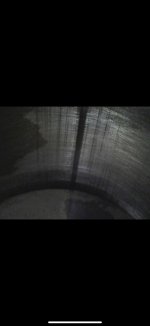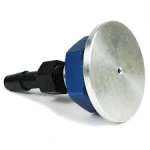I'm hoping some of you experts can help me identify if there is some issue with my plane causing me to lose an excessive amount of knots.
One of the reasons I purchased a Vans RV-6 is the speed that these birds cruise at. For some reason, my plane doesn't seem to be getting anywhere near these speeds. From what I have researched, I should easily be able to hit 160-170 knots. I think I did, once, in a dive, with full power...
Here is my current setup:
RV-6
Lycoming O-320 E2A (160 h.p.) ~1060 SMOH & ~50 IRAN.
Sensenich Fixed Pitch (set at 76")
All fairings installed.
Cruising at 10,500 at 2500 RPM I was seeing 150 TAS, 125 IAS, 144 GS.
Cruising at 10,500 at 2300 RPM I was seeing 134TAS, 112 IAS, 129 GS.
From what I have seen, 76" pitch on the prop is fairly low. I think I have seen most people running around 80-82". I was thinking about putting the twist up to 78" and testing the results, and maybe finally going up to 80 if need be. I am more than happy with my climb rates and would gladly trade some climb for speed.
Looking at the lycoming manual, I need to have a static RPM of at lease 2300 RPM WOT on the ground. As my plane is configured right now, I am just under that (around 2960 rpm WOT). Although I don't think there is much danger in adding 2" of pitch since my climb rates are good and I don't run the risk of sucking up all of the runway before hitting rotation speeds, I still have some hesitations.
Does anyone have any ideas on where some extra knots could be hiding?
Anyone with a similar config care to share your cruise & power settings for comparison?
Thanks all!
(Hoping I can get this figured out so I can chop some time off my flight to Oshkosh from San Diego).
One of the reasons I purchased a Vans RV-6 is the speed that these birds cruise at. For some reason, my plane doesn't seem to be getting anywhere near these speeds. From what I have researched, I should easily be able to hit 160-170 knots. I think I did, once, in a dive, with full power...
Here is my current setup:
RV-6
Lycoming O-320 E2A (160 h.p.) ~1060 SMOH & ~50 IRAN.
Sensenich Fixed Pitch (set at 76")
All fairings installed.
Cruising at 10,500 at 2500 RPM I was seeing 150 TAS, 125 IAS, 144 GS.
Cruising at 10,500 at 2300 RPM I was seeing 134TAS, 112 IAS, 129 GS.
From what I have seen, 76" pitch on the prop is fairly low. I think I have seen most people running around 80-82". I was thinking about putting the twist up to 78" and testing the results, and maybe finally going up to 80 if need be. I am more than happy with my climb rates and would gladly trade some climb for speed.
Looking at the lycoming manual, I need to have a static RPM of at lease 2300 RPM WOT on the ground. As my plane is configured right now, I am just under that (around 2960 rpm WOT). Although I don't think there is much danger in adding 2" of pitch since my climb rates are good and I don't run the risk of sucking up all of the runway before hitting rotation speeds, I still have some hesitations.
Does anyone have any ideas on where some extra knots could be hiding?
Anyone with a similar config care to share your cruise & power settings for comparison?
Thanks all!
(Hoping I can get this figured out so I can chop some time off my flight to Oshkosh from San Diego).








